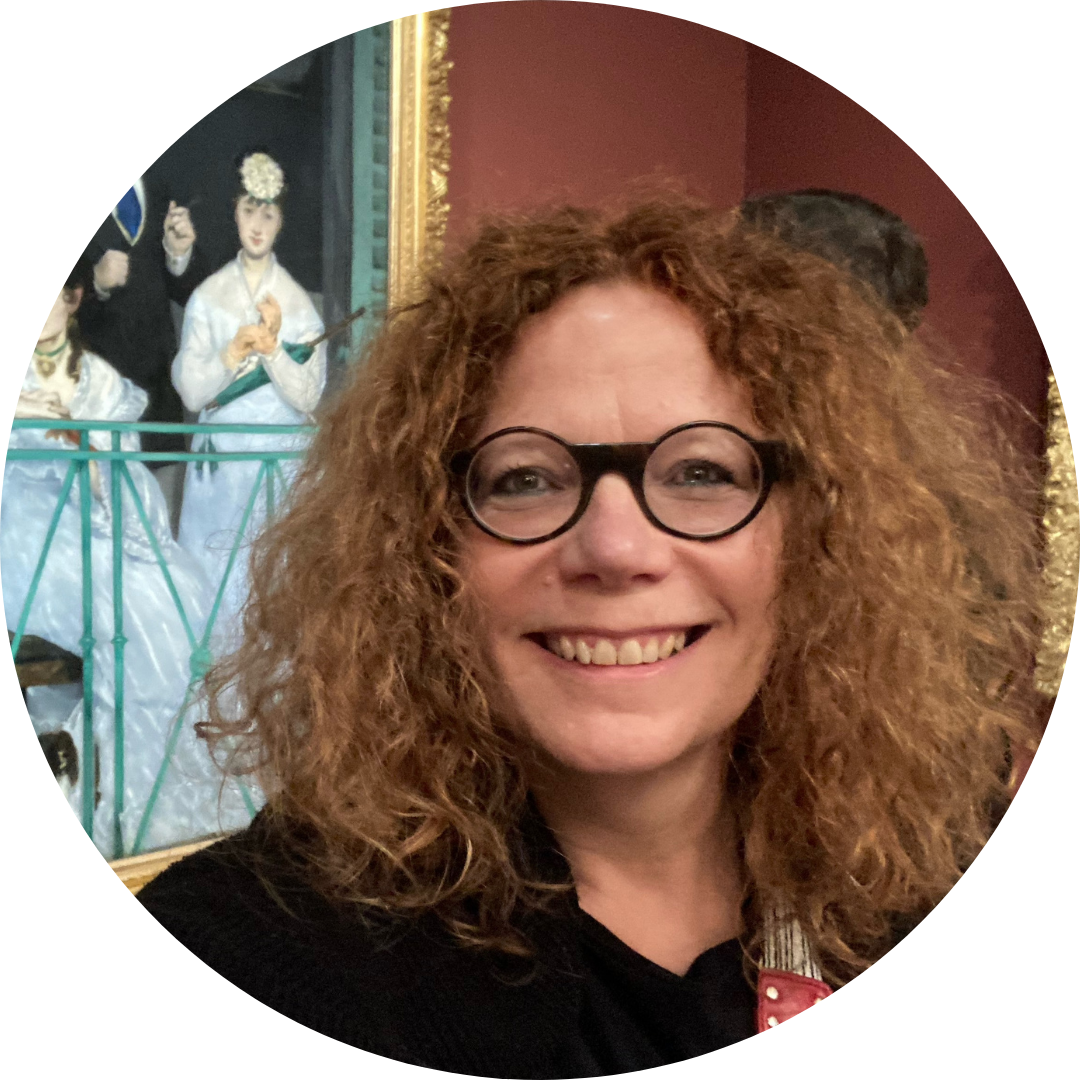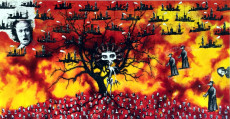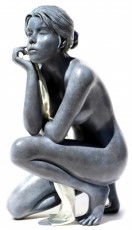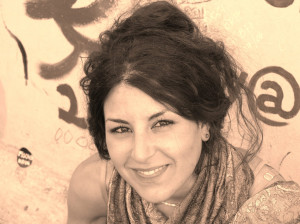
Are the images of joy joy?

About the publication in October 2023 of Paul Ardenne's book entitled “L'art en joie. Aesthetics of joyful humanity.” (Edition La Muette/BDL. 336 pages. €49.)
I am a specialist in the art of joy. No, no, I'm not joking! Joy, I give conferences, daily demonstrations, it has always been my breath of life, and the novel by Goliarda Sapienza which bears this title is my bedside book. My caravan book too: I always have a new, wrapped copy in the gift box slipped under my bed, ready to be given to the wonderful people I meet along the way. Because the character of Modesta will always accompany me in his art of getting through the worst situations without ever losing this form of vital energy anchored to the body. So, oh joy: in its January issue, the contemporary art magazine Artpress offers us an interview which I enjoyed, and which I joyfully want to share here with you, from Reims where I just happened to go marvel at the smiling angel, sculpted on the pediment of the cathedral illuminated with stained glass windows by Marc Chagall. The interview with Paul Ardenne by Catherine Millet.
The first is a writer and art historian, the second is an editorial director, renowned art critic, exhibition curator and “woman of letters”, as they say. But above all, Paul Ardenne signs the extraordinary work published at the end of last year by La Muette/BDL: “Art en joie. Aesthetics of joyful humanity.” 336 pages abundantly illustrated with drawings, paintings, sculptures, photographs, performances, videos... in short, enough to consider the artistic representation of joy from ancient art to the present day: image of the smiling face, figures of celebrating bodies , from love, well-being, harmony, victory, to messages for tactical, political, propaganda or commercial purposes. Without forgetting forms of charitable art, in the spirit of Care.
Catherine Millet’s first question to Paul Ardenne sets the tone: “Why this unexpected, almost incongruous theme of joy? », she asks him as a preamble. This, in my opinion, gives a small idea of the poor esteem nourished by the contemporary art market in general, and by art criticism in particular, for this "feeling of pleasure, of intense happiness, characterized by its fullness and its limited duration,” says Larousse. Wouldn’t joy be a somewhat cutesy concept? Wouldn’t it be a bit provincial to be interested in art that makes you happy? Wouldn’t a work of art for sale that makes you “stupidly happy” be a little superficial? Only commercial? In short… we will remember that “among these people”, joy is an incongruous theme. Let's move on. And let's admit that indeed, the prefabricated joy of the media, the obligation of joy of selfies and other social representations does not work in favor of my favorite fuel...
“The control of joy and even more of its images are always an issue of civilization. This still applies to the feel-good culture that is in vogue today – having to smile constantly, taking a “selfie” while displaying the stereotypical figure of happiness,” explains Paul Ardenne. “The image of joy is a constructed and oriented image. Authoritarian regimes have understood this well. Fascist Dopolavoro, Nazi Kraft durch Freude, propaganda from the communist era... joy is displayed everywhere, its multiplied image is the symbolic double of the ideology of happy power and realized happiness which are the stock in trade of these political regimes, regimes that are as sinister as any. »
In his first chapter, entitled “The image of joy, a slow affirmation”, Paul Ardenne shows that in reality, this image took time to emerge throughout Antiquity. While there is no shortage of scenes of jubilation, between banquets, victories to celebrate and other rejoicings, their artistic representation remains surprisingly modest, whether on the frescoes or decorated tableware of Egypt, Greece or ancient Rome. . Later, Nicolas Poussin himself represented the worshipers of the Golden Calf with metaphysical restraint, even though they were literally described as hysterical in the Bible. “As late as the 18th century, Tiepolo, a Venetian painter, composed a minuet scene where no one smiles,” quotes Paul Ardenne. “And what about the Wedding at Cana, by Veronese, in 1563? An immense sad celebration where the central figure, Christ, is overlooked by that of a butcher who cuts meat, a metaphorical announcement of His sacrifice... Native American civilization, in all of its representations, frescoes or sculptures, does not count so to speak, no happy face. This is obviously not a coincidence. »
While Catherine Millet points out to him that throughout the pages, he shows that the representation of children's games expresses the purest representations of joy rejecting complexity, evoking a book by Bernanos dealing with religious joy through the figure “innocent” of Saint Thérèse of the Child Jesus, Paul Ardenne confirms that “there is much to say about the representation of Christian joy, whether in literature, in the visual arts or in music. » And the art historian himself asks the question: “Is there a pure representation of joy, with regard to the visual arts? » Before giving his answer: “No. Representing joy is never innocent. » And to cite the paintings of Mary Cassatt, where the children are absorbed in their play, or the video series Children’s Games by Francis Alÿs, who “films the children as they are, in a raw way. They're playing, that's it. They are happy. They are joy incarnate universally and without concept and everything else is literature. One of the greatest works on joy ever made. »
“You address the possibility of a joyful political art,” Catherine Millet remarked to Paul Ardenne, asking him to develop what the example of Claude Monet’s pavoised Rue de Montorgueil (1878) reveals to us. “The power of the instantaneous, of the image painted at the moment of the events,” replies the writer. “Monet is a sincere and impatient republican! His painterly gesture captures a festive expression at the very moment when the Republic is finally celebrated publicly, here in a street in Paris, seven years after its proclamation and three years after the promulgation of the constitutional laws of 1875 – the 3rd Republic is born in pain , we remember, between Franco-Prussian defeat, occupation and Paris Commune. Finally the celebration! The flags flap in the wind of summer beginning, under the sun, the air vibrates. The two paintings that Monet created of this historical snapshot experienced by him with passion duplicate the real joy inherent in this event. The Oath of the Palm Game, by David, painted after the events of 1789 but with hindsight, is by comparison a work more meditated than eruptive. » Personally I wonder: is cooled joy still joy?
When Catherine Millet asks him if the critical distance that many works and actions of contemporary art take, perpetuating the irony of the Dada spirit, makes them joyful works of art, Paul Ardenne warns that in this case , joy is often simulated. “Is the joy that is born from forcing laughter or from good humor still joy? Many Fluxus works, in particular, are poses. (…) The irony that jokes is not joy, it contains too much gall, it is at best the nostalgia of joy. (…) Critical art will always miss joy. " That's what I thought.
 Article written by Valibri in Roulotte
Article written by Valibri in Roulotte
Illustration: cover of the book by Paul Ardenne entitled “L’art en joie. Aesthetics of joyful humanity.” (Edition La Muette/BDL. 336 pages. €49.)





































































